 Evolution
Evolution
 Intelligent Design
Intelligent Design
Introducing the Curious Caddisfly
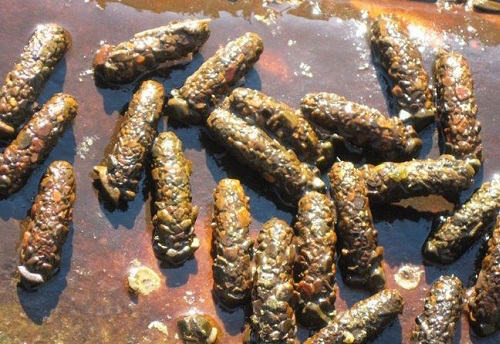
Photo by Waldemarpaetz [CC BY-SA 4.0], via Wikimedia Commons.
This past weekend Seattle enjoyed gorgeous weather, and my wife and I took a kid from our church hiking near a local creek. Along the way, we stopped multiple times to examine the creek, and found strange arthropod-like creatures that seemed to live inside hard cylindrical shells that almost perfectly matched the color of the surrounding rock and gravel in the creek bed. We observed hundreds, if not thousands, of these strange cylindrical bugs. They looked kind of like what you see in the photo above.
What arthropod lives underwater inside a cylindrical tube? Its hard shell sort of resembled a crustacean, except the exoskeleton of a crustacean is made of chitin, and these tubes seemed to be a mosaic of gravel and rock bits. Its paired, jointed legs and head (as well as its short antennae) looked like an insect, but I was unaware of any insect with such a shell. And although this tube-like shell was reminiscent of a mollusk, it couldn’t be a mollusk, because mollusks don’t have arthropod-like legs as this creature did. Mystified as to what they were, but pretty sure there were plenty to go around, we decided to take one home in a bottle full of creek water for further inspection.
Here’s a photo of the one we took home (not to scale):
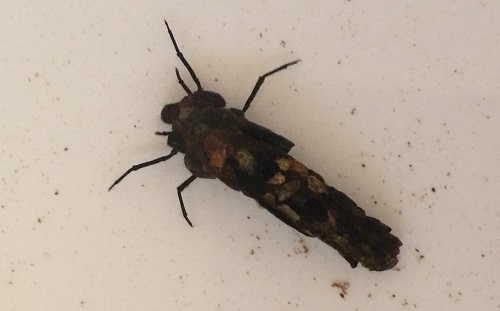
Later that evening, while eating some Burger King (my wife and I detest Burger King but the kid insisted that he wanted a Whopper, so we caved in), we did a little googling and identified the strange arthropod: it’s the larval stage of a caddisfly, an insect. So what’s a caddisfly?
Caddisflies, as we learned, belong to an order of very common insects whose larvae live underwater, typically in lakes, rivers, streams, or ponds. Wikipedia tells us that over 12,000 species of caddisflies have been identified.
With many species of caddisflies, the larvae emit silk from their mouths, which they then use to glue together bits of rock or gravel from the surrounding environment to build a cylindrical case. During the larval stage, caddisflies live in this homemade tube.
The case has many purposes. It gives them physical protection like any hard shell would, and because caddisflies use surrounding materials to build their cases, they are naturally camouflaged. Additionally, the case traps bits of food from the flowing water, which the larvae eat.
You can pick up the case of a caddisfly and the larva will immediately retract itself back inside for protection. But if you were to remove the organism (which we didn’t), you would see that in many respects caddisfly larvae resemble a caterpillar:
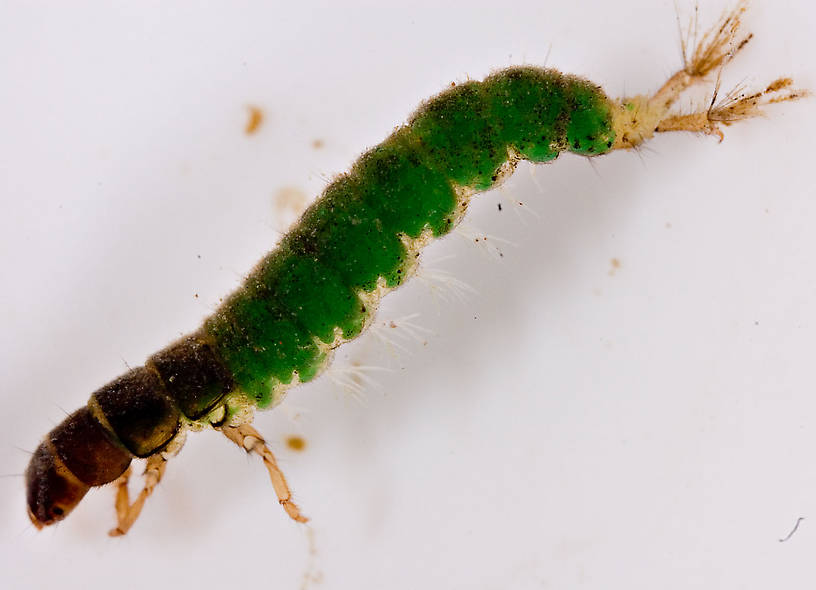
And like a caterpillar, caddisfly larvae eat and eat and eat inside their homemade cases, going through five periods of growth and molting called instars. They build multiple cases during this time. But during the last instar, they don’t shed the case. Rather, they seal it up with silk, much like a caterpillar would seal itself into a cocoon, and then they begin the process of complete metamorphosis, also called holometabolism.
The pupal stage lasts from two to three weeks, and after metamorphosis is finished, the organism emerges with a completely different body plan — the adult caddisfly:
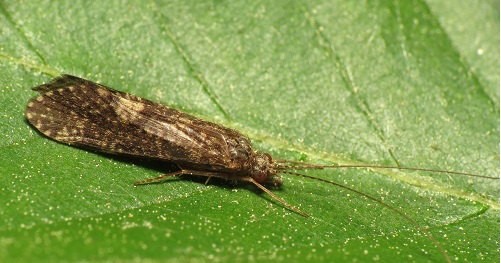
Photo by Katja Schulz from Washington, D.C., USA (Caddisfly) [CC BY 2.0], via Wikimedia Commons.
Here’s how we described the problem that holometabolism poses for Darwinian evolution in Discovering Intelligent Design:
It is exceedingly difficult to understand the origin of holometabolism in Darwinian evolutionary terms. Neither the larval nor the pupal stage is capable of reproduction — only the adult is. In particular, the pupal stage is an all-or-nothing proposition. It must complete the process and become an adult, or it will die without ever reproducing.
The liquefied organism must be completely rebuilt. For this to occur, large amounts of information — encoding the larval body plan, the mechanisms of transformation during metamorphosis, and the adult body plan — must exist before the larva enters this stage. An organism could not survive complete metamorphosis unless the entire process was fully programmed from the beginning. Such a large jump in complexity requires forethought and planning — things that don’t exist in Darwinian evolution. As one evolutionary entomologist acknowledges:
… the biggest head-scratcher in evolutionary biology would have to be the origin of the holometabolous insect larva.
But from an ID perspective, metamorphosis is easy to understand: it arose, evidently, by planning and foresight. An intelligent agent could produce the information to program the entire life cycle of such an organism, allowing it to undergo a radical transformation like this. Only a goal-oriented process like intelligent design can explain the mystery of holometabolism.
Unfortunately, our caddisfly (which the kid named “Trophy”) will never get to experience holometabolism to become an adult fly. We took Trophy home, put it in a bowl of creek water for observation, and fed it a couple bits of burger meat from a Whopper. It seemed to enjoy the meat, which it immediately took into its mouth. But the next morning, Trophy was dead. I’m not sure if it was the Burger King, the lack of fresh flowing creek water, the shock of being transported (although even after we put him in the bowl at our home, he remained active and energetic for the evening), or something else. Regardless, here is the caddisfly’s case after it died (not to scale):
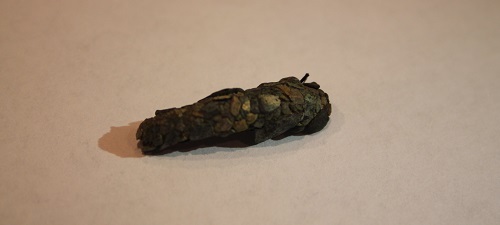
There’s one final fascinating tale to be told about caddisflies. Naturally built caddisfly cases have their own form of artistic beauty. Because they use materials from their surroundings to build their cases, if you put a caddisfly in a tank with synthetic materials, they will build ornate cases that can be sold as artistic jewelry. Here’s a video about a French jeweler who gives caddisflies pieces of gold, pearl, and other bits of bling to make caddisfly jewelry:
After learning all this over the weekend, I came to appreciate that the caddisfly is a remarkable insect, even though it’s quite common. A testament, on many levels, to intelligent design.
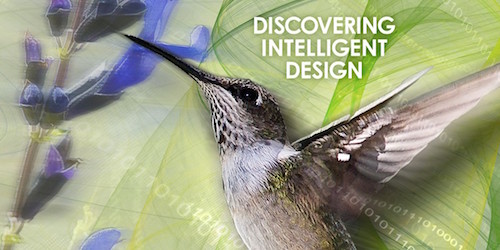
You can learn more about metamorphosis and intelligent design through our new online component of the Discovering Intelligent Design curriculum.

